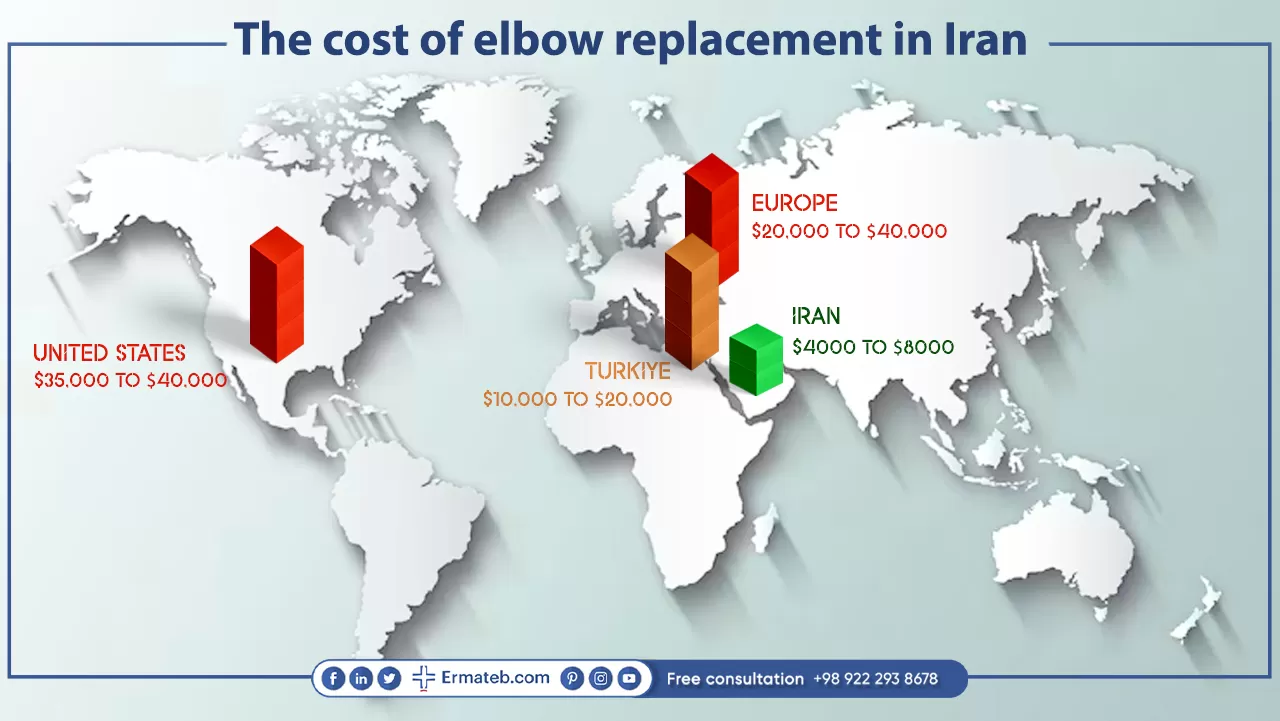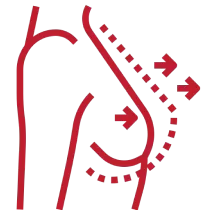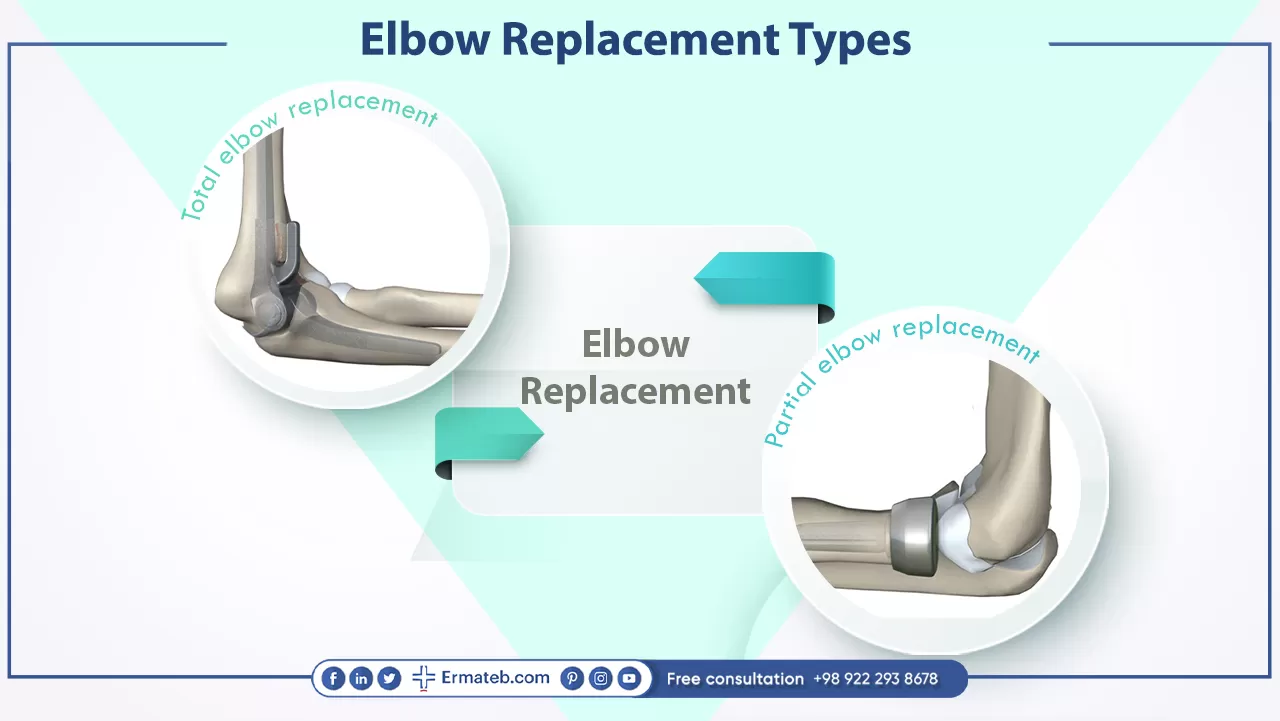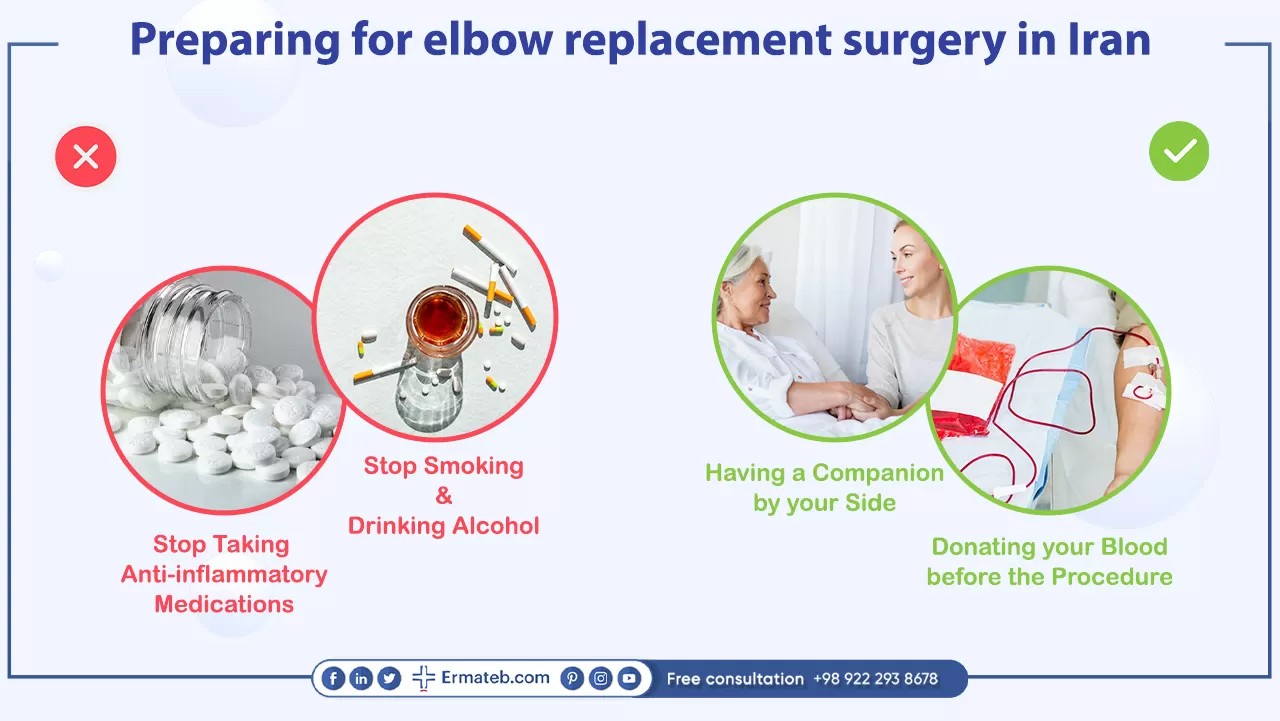The cost of elbow replacement in Iran

The cost of elbow replacement surgery in Iran varies depending on the type of prosthesis used, the reputation of the surgeon, and whether it’s a partial or total elbow replacement. However, you should know that prices in Iran are more affordable than in other countries due to low currency, and therefore international patients can save more money up to 50% with extra expenses!
Usually, elbow replacement surgery in Iran costs between $4000 and $7000. This is while patients find the cost of this surgery between $35000 and $40000 in America and other European countries. Additionally, in most cases, the insurance does not cover the costs of these kinds of surgeries.
Who are the candidates for elbow replacement surgery?
Usually, individuals who have elbow pain and arm movement issues are candidates for elbow joint replacement surgery. In general, older people are more likely to have to get an elbow arthroplasty surgery because of their greater likelihood of breaking a bone from a fall.
Sometimes, a fracture of the lower part of the upper arm bone, which is called the distal humerus, is so severe that other treatment options do not work and therefore the person needs to have an elbow replacement procedure. In most cases, distal humerus fractures need surgical procedure and other options other than elbow replacement do not yield the desired outcomes.
People with different types of arthritis, such as rheumatoid arthritis and psoriatic arthritis are also candidates for this surgery. However, the improvements in non-surgical treatment options for people with these types of issues, have led to fewer individuals having to get elbow replacement operation these days.
Osteoarthritis in the elbow is another reason individuals have to get their elbow joint replaced. However, this is not a common condition.
How is an elbow replacement performed?
The elbow replacement surgery usually takes around 2-4 hours. The surgical procedure is performed in an operating room in a hospital. At first, you will receive an anesthetic to feel no pain during the operation, and after that, the surgeon makes an incision at the back of the elbow to access the arm bone and joint.
The surgeon then eliminates any bone spurs, scar tissue, and cartilage residue. After that, he places the elbow joint prosthetic devices between the bones of the upper and lower arms and attaches them to the bones. In the end, the surgeon closes the incision with stitches or staples and applies a bandage to the patient’s elbow. Some surgeons may place splints around the patient’s arm to keep the bone stable while it heals.
The patient will be required to stay in the hospital for about 4 days following an elbow replacement operation while receiving special medical care until the patient is stable enough to get discharged from the hospital and go home.
Elbow replacement types
The elbow replacement operation can be partial or total.
1.Partial elbow replacement: This is a treatment option for elbow joint damage in which just one part of the joint is replaced with an orthopedic prosthesis. This elbow surgical procedure is technically called Hemiarthroplasty.
2.Total elbow replacement: A total elbow arthroplasty includes replacing all parts of the elbow joint with prostheses. In this operation, the cartilage of the ends of the three arm bones is eliminated and replaced with prosthetic components that together function similarly to the natural elbow joint.
Elbow prosthesis types
Elbow joint prosthetic devices are divided into two types:
1.Linked prosthesis:
This is a joint prosthesis, a kind of loose hinge in which all parts are connected. One merit of linked joint prostheses is they provide good stability. However, the stresses of movements may lead to loosening of the prosthesis.
2.Unlinked prosthesis:
These joint prostheses consist of separate pieces each attaching to the end of one bone. Individuals who are candidates for unlinked elbow replacements should undergo a thorough evaluation of elbow stability, including collateral ligament integrity, bone stock, and periarticular muscle function.
Preparing for elbow replacement surgery in Iran
The first thing you need to do is inform your doctor about any medical condition you may have, including diabetes and high blood pressure. The doctor may also ask about the medicines you are taking. Therefore, be sure to have the generic names of your medications and their dosages to show to the doctor a few weeks before the surgical procedure.
Some of the general guidelines for preparing before the surgery include:
1. You should stop taking aspirin and other anti-inflammatories a few weeks before your procedure. It is better to consult with the doctor about this so that they can prescribe an alternative for you, like acetaminophen.
2. You should stop smoking and drinking alcohol a few weeks before your surgery since they hinder healing and increase bleeding.
3. You need to finish any dental work before undergoing an elbow replacement since the germs in your mouth can enter the bloodstream and cause infection in the joint.
4. In some cases, patients may need blood during elbow replacement surgery, so they can either donate their blood in advance to be used later during the procedure.
5. You need to arrange for a friend or a member of your family to be available for a few weeks after the surgery to help you with daily activities, such as using the toilet, bathing, shopping, housework, and laundry. If you’re traveling abroad for this surgery, make sure to take someone with you and arrange a hotel that provides special services to surgical patients.
6. You should check with the doctor to see when you’re supposed to start fasting before surgery. usually, surgeons ask patients to not drink or eat anything after midnight before their procedure.
Risks and side effects
Like hip replacement, elbow replacement surgery also has some complications. The most common risks and side effects of elbow replacement procedure include:
1. Infection
2. wearing or loosening of the prosthesis
3. Joint instability
4. Pain
5. nerve and blood injury
6. Allergic reaction to the prosthesis
7. Anesthesia risks
8. Bleeding and blood clot
Recovery
When you are in the hospital, the physical therapist prescribes a rehabilitation program that includes exercises to relax muscles. In addition, they instruct you on other at-home rehabilitation exercises for the recovery time after the elbow operation. Usually, the bandages and sutures are eliminated before being discharged from the hospital, but your elbow remains swollen and tender for some weeks.
Since the elbow procedure is a major operation, it takes more time to fully recover from it compared to other kinds of operations. You need to take strong pain medications for at least 2-3 weeks after your surgery. Additionally, getting used to the new elbow takes a few weeks. You should not lift anything heavier than a cup of coffee for 6 weeks following the operation. It is important that you adhere to the doctor’s instructions for proper recovery from the elbow replacement procedure.


 Arabic
Arabic
 German
German
 Persian (Farsi)
Persian (Farsi)
 Russian
Russian
 Beauty
Beauty






 Medical
Medical




 Hotels
Hotels
 Hospitals
Hospitals
































![Frequently asked question about [name]](/v2tem/images/pages/service/faq-image.webp)
